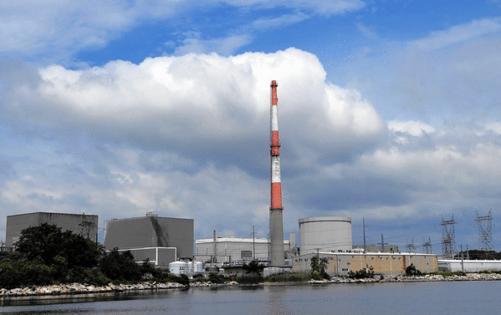CT nuclear power plant offers plan for storing hazardous waste. What to know
Published in Business News
After operating for decades, the Millstone nuclear power plant is seeking “final closure” of three hazardous waste storage and management units in Waterford, Connecticut.
Dominion Energy, which owns Millstone, needs approval from the state Department of Energy and Environmental Protection for the plan that covers three separate buildings at the complex on Long Island Sound.
“The plans describe the closure of these regulated units in a manner that will result in the removal of all waste and contaminated material and/or soil for disposal at an offsite facility, and the decontamination of any contaminated structure so that it will be protective of human health and the environment,” DEEP said on its website. “This public announcement does not imply approval by the CTDEEP of the Millstone closure plans. The purpose of this public notice announcement is to solicit comments concerning the plans.”
In the coming weeks, DEEP is looking for public input under a 30-day window that expires on Oct. 1.
A public hearing has not been scheduled yet, and no final decisions have been made on the plan.
The plan does not address nuclear or radioactive waste, which is subject to approval by the U.S. Nuclear Regulatory Agency. Instead, the proposal concerns hazardous and solid wastes that are under the jurisdiction of DEEP, officials said.
Three buildings
The waste is currently stored in three separate buildings at the complex along Long Island Sound on Rope Ferry Road in Waterford.
In Building 421, the drum storage area that would be closed “measures approximately 16 feet by 9.5 feet and was first designated for storage of hazardous waste for greater than 90 days in November 1980,” DEEP says. The small building is within the complex’s “protected area” and is “constructed with a poured, slab-on-grade, concrete floor, and concrete block walls,” the department said.
The second storage site is on the second floor of another building in two adjacent rooms with concrete floors. The front room “was never used to store hazardous waste,” but the rear room “was first used for hazardous waste storage on or about March 1989 when the area was designated for waste storage,” DEEP says.
The third building is known as “Warehouse 9,” where the waste is in an area measuring about 52 feet by 20 that “was first used for storage of mixed waste on or about January 2001 when the area was first designated for waste storage.”
DEEP is seeking public input, noting that “a public hearing may be held whenever the department finds that response to this notice indicates significant public interest.”
The plan does not include any specific sites where the waste could be sent, adding there is “no significant volume of waste that will be generated as part of the closure work,” officials said.
Millstone costs
Millstone has been in the news recently as ratepayers across Connecticut have been complaining about their electricity costs.
That is partly related to the “public benefits charge” on utility bills that includes money to help pay for the electricity generated at Millstone.
The largest portion of the public benefit fee — the Millstone costs — dates back to a deal the state cut with the power generator in 2017 to preserve about 1,000 jobs by ensuring that the then-ailing complex would remain open after the owners had threatened to close the station. In return, the state has kept a reliable supplier of electricity that has been crucial in a deregulated electricity system.
The Millstone costs, which started on July 1, will continue as part of a 10-month payment period that some advocates had pushed to be spread out over 22 months to avoid a rate shock. But state utility regulators rejected that idea recently in a 2-1 vote.
The complicated Millstone agreement saved money for ratepayers several years ago when the price of natural gas spiked, and the Millstone rate was below that price level. But when the price of natural gas went down and electric generation costs dropped below the fixed nuclear price of about 5 cents per kilowatt hour, ratepayers began paying more in the public benefits charges. That is the situation today.
©2024 Hartford Courant. Visit at courant.com. Distributed by Tribune Content Agency, LLC.












Comments